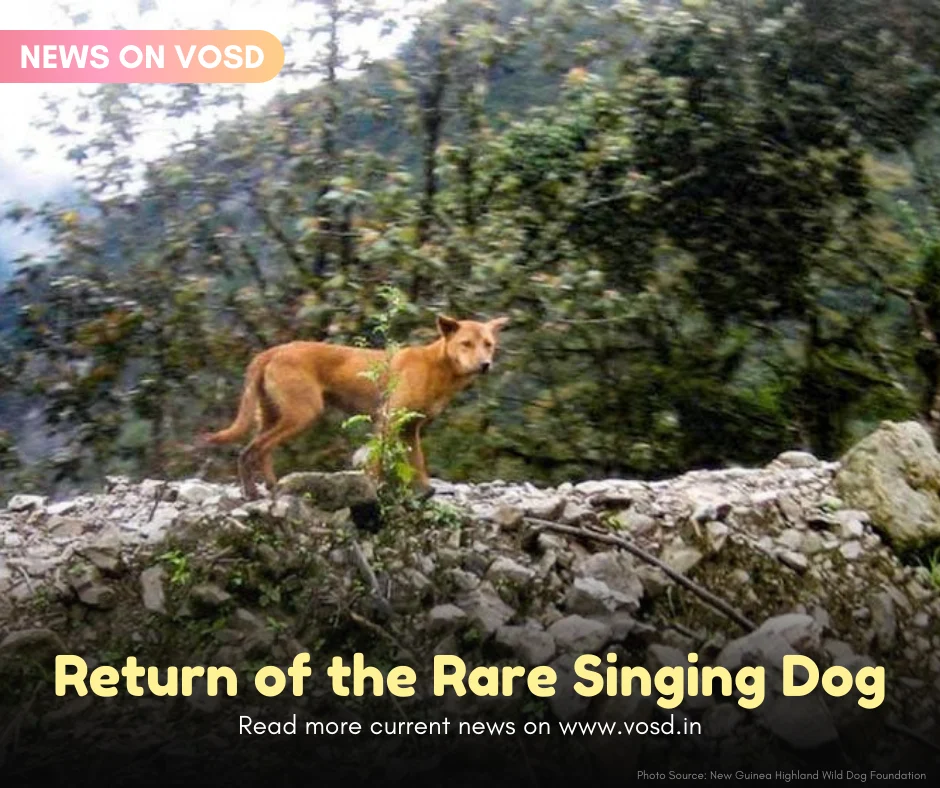A mysterious species of dog has returned to the wild – the New Guinea Singing Dog.
For the last four decades, if you ever wanted to see the ultra-rare New Guinea Singing Dog and hear its unique and musical howl, you would have to visit a zoo. But now, there are new reports of sightings of this animal in the wild. And if true, it could signal a comeback for these mysterious and beautiful canines.
What is the New Guinea Singing Dog?
The Singing Dog is a cousin of the famous dingo, an Australian wild dog that roams the continent. Zoologists and scientists believe that they originated on the Indonesian island of New Guinea. Today, we consider them to be the world’s rarest dog.
The dogs are of medium build with a reddish-brown coat. What is most distinctive about them is their eerie, romantic howl that often harmonizes with other Singing Dogs. They are also one of the rare dogs that cannot be domesticated. Scientists believe them to be feral and dexterous and wild, like cats.
The story of the world’s rarest dog
People have longed believed the New Guinea Singing Dog to be extinct. But, one day, schoolteacher-turned-zoologist and explorer began several expeditions to find it. Funnily enough, he wasn’t even looking for the dog when he set off from his home in the Bronx in New York.
James McIntyre, who trained as a zoologist and worked as a zookeeper, veterinary technician, school teacher, and carpenter, was always passionate about one thing: exploration. He initially shipped himself to the island from across the world in search of intersexual pigs (and he found them).
His colleague, a dog expert, found out about his plan and suggested he look for the world’s rarest dog – the New Guinea Singing Dog – as well. And during one of his trips, that’s exactly what he might have found.
What does this mean for the Singing Dog?
There are other instances of people spotting the dog in the wild. However, recent genetic testing from paw prints and faecal matter might indicate what was previously unconfirmed. The results showed that the genetic profiles of the highland dogs McIntyre found and that of singing dogs are nearly identical.
This means hope for the population of Singing Dogs. There are currently only 200-300 Singing Dogs in captivity, and they are facing the negative effects of inbreeding. Finding these dogs in the wild would mean a rejuvenating boost to their stock, allowing us to study the fascinating creatures for many more years to come.
Information compiled above is sourced from Science Magazine, National Geographic, Huffington Post, and Scientific American.








